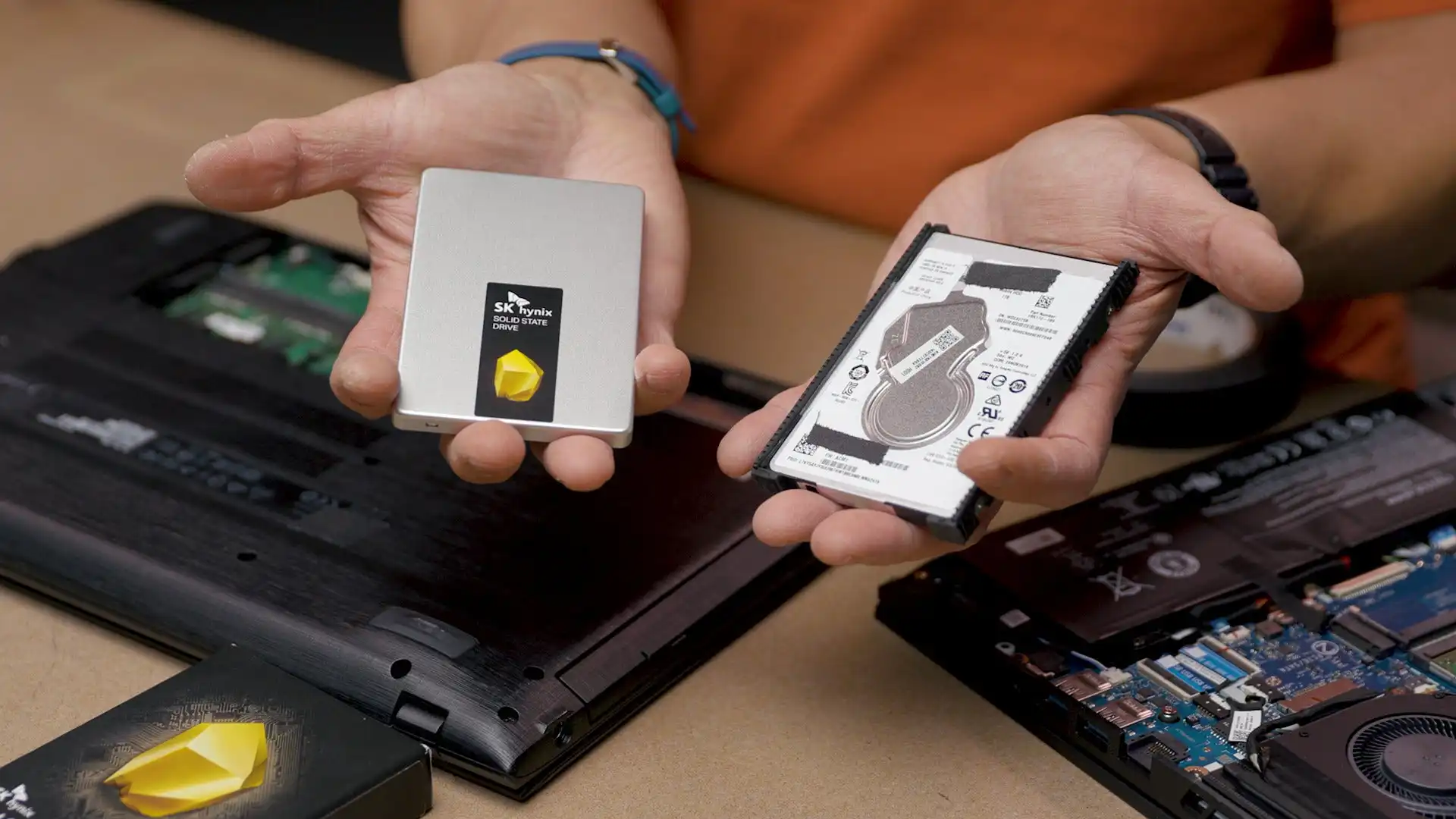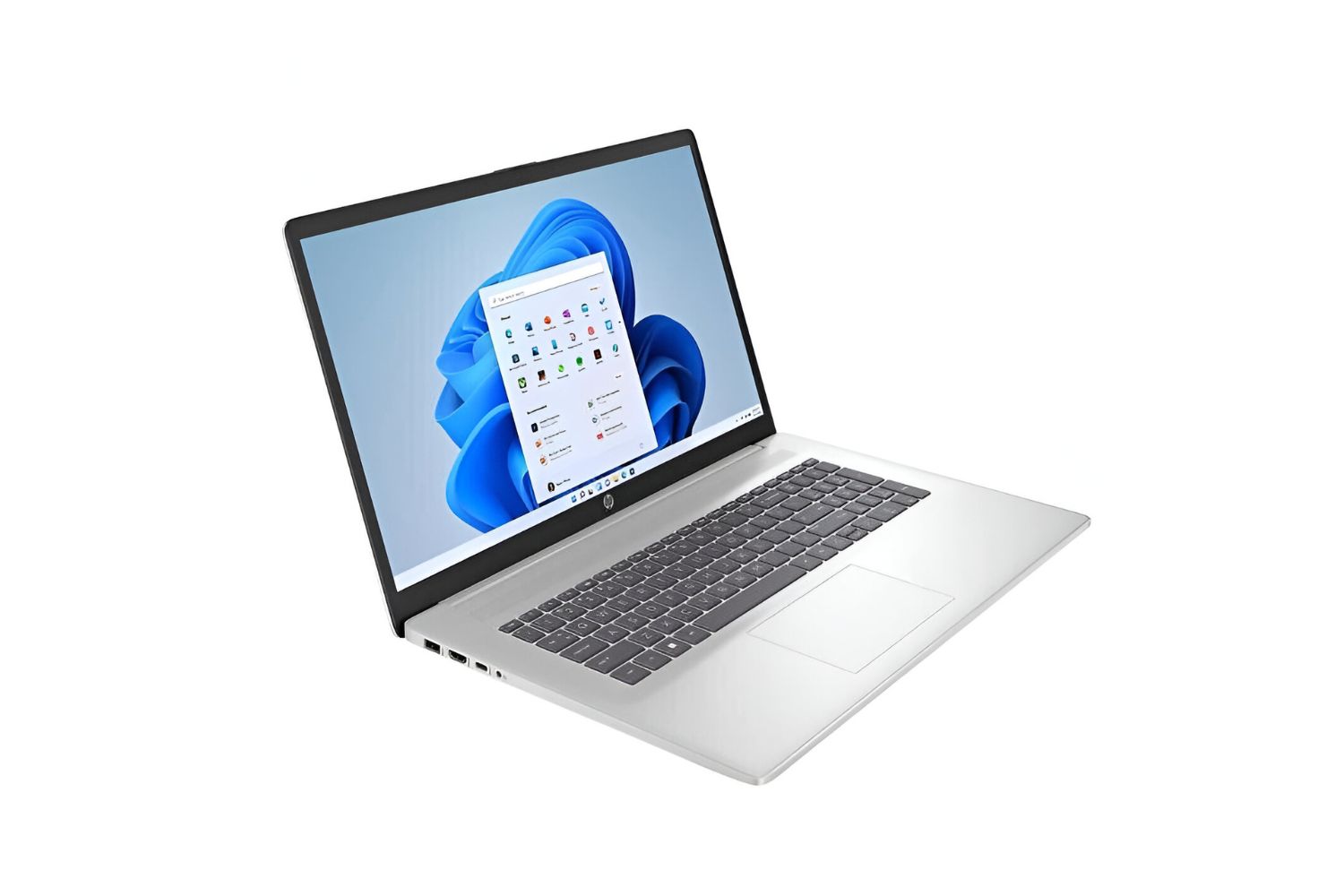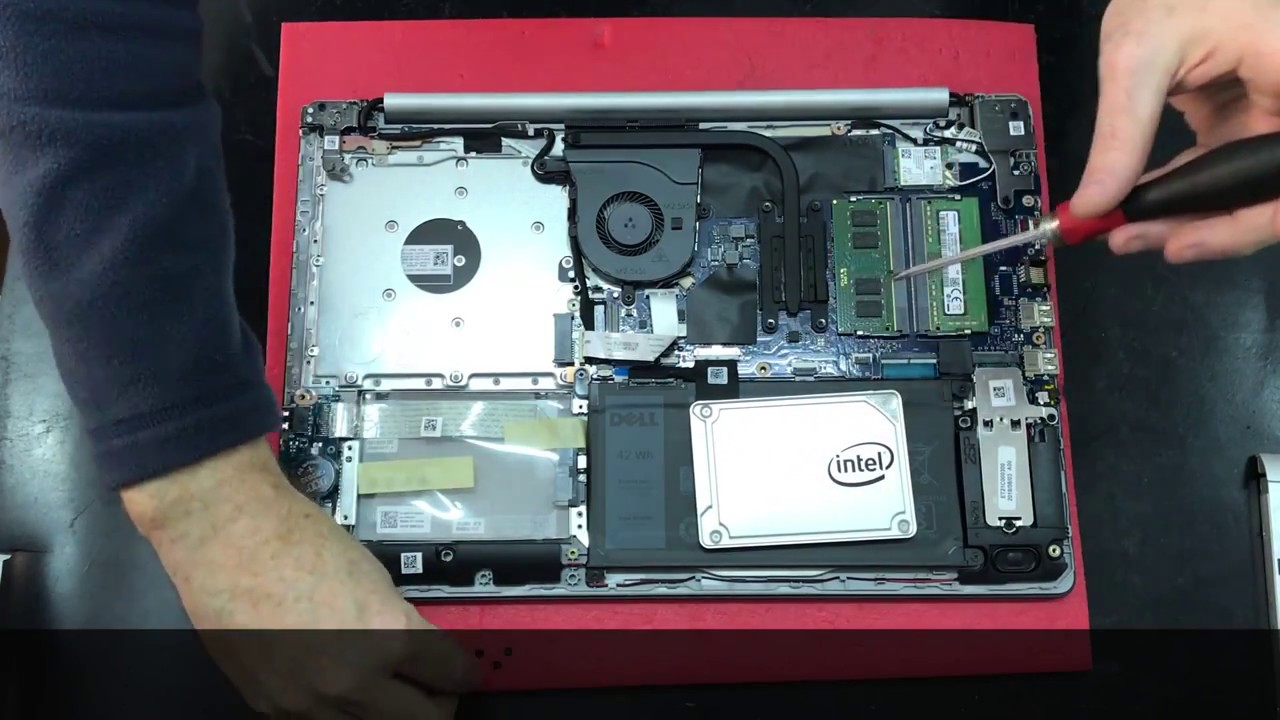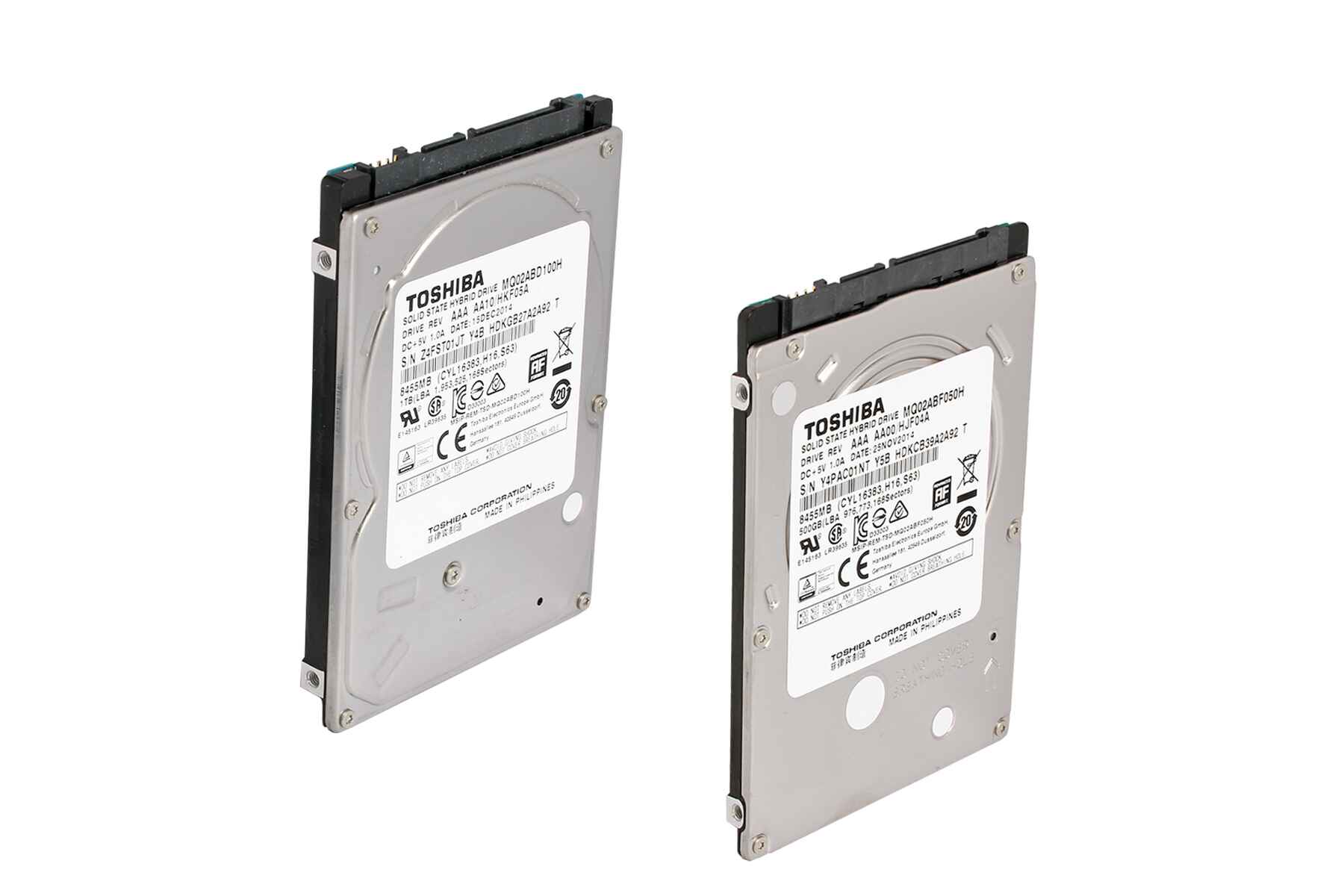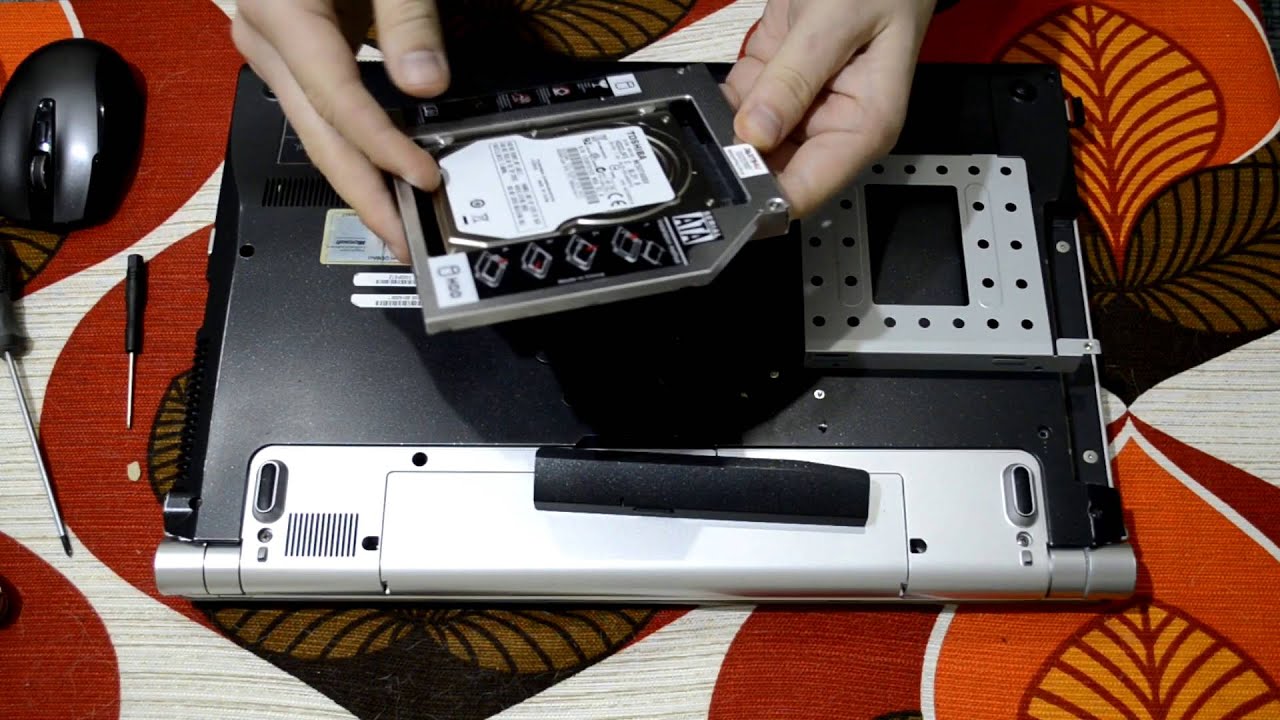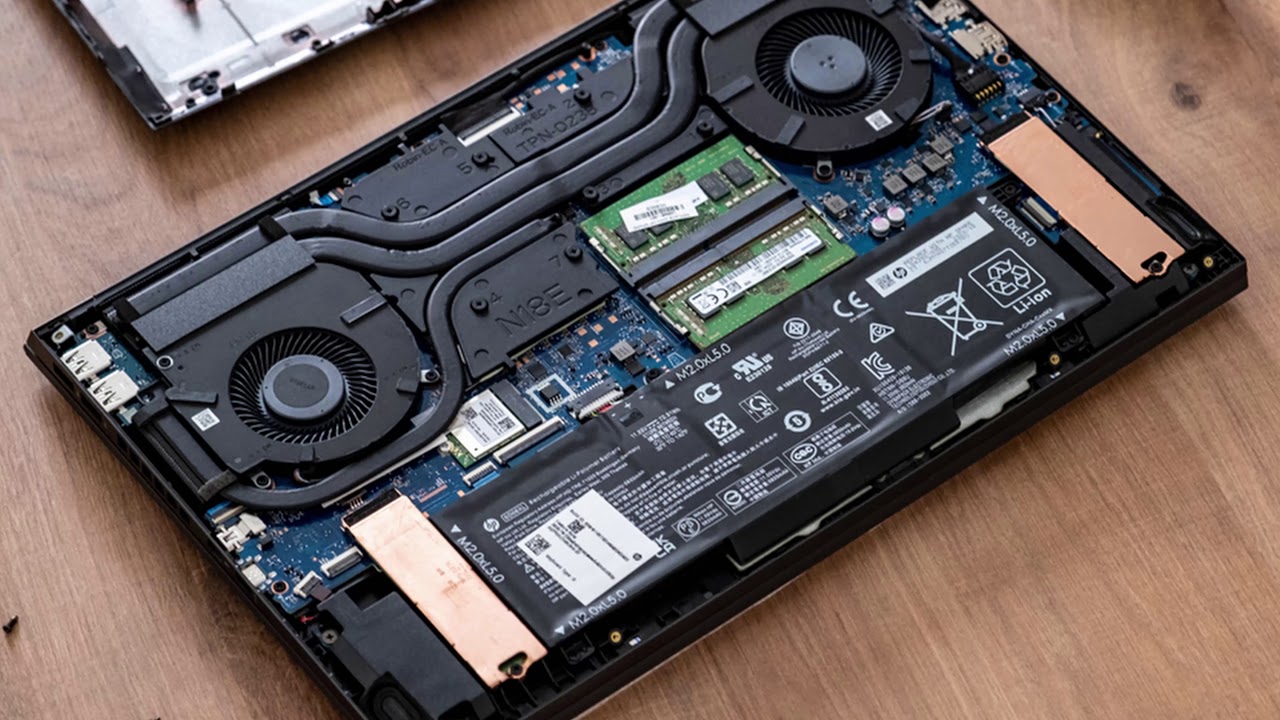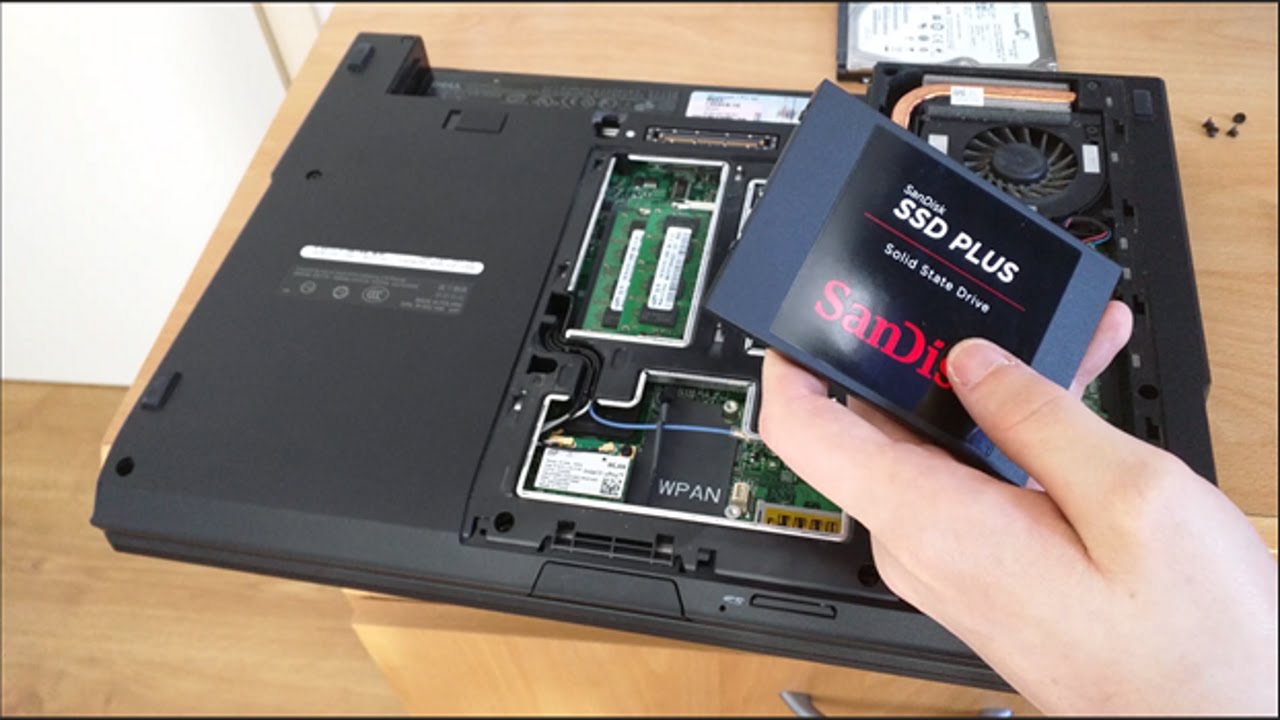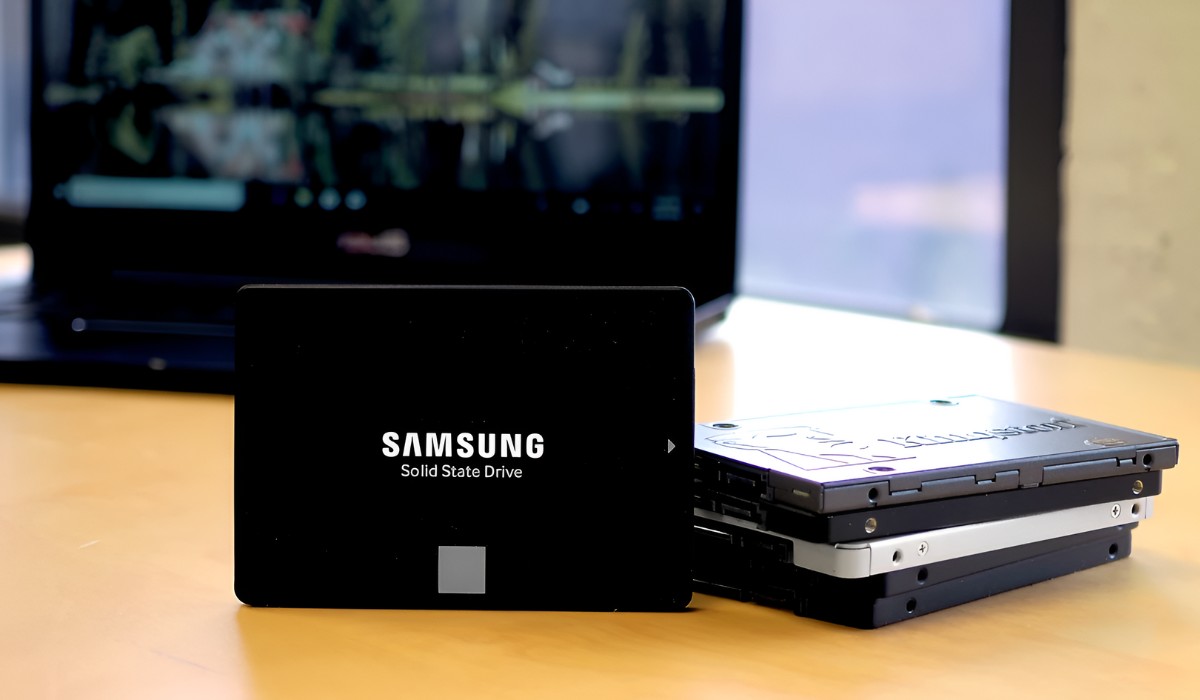Introduction
Welcome to the wonderful world of solid-state drives (SSDs) in laptops! If you’ve ever wondered about those lightning-fast laptops that seem to boot up in the blink of an eye, then SSDs are the secret sauce behind their remarkable performance. Gone are the days when traditional hard drives (HDDs) were the only option for storage in laptops. SSDs have revolutionized the way we store and retrieve data, offering numerous advantages over their mechanical counterparts.
In this article, we will delve into the fascinating world of SSDs and explore the reasons why they have become the preferred choice for many laptop users. From understanding how SSDs work to highlighting the benefits they offer, we will cover everything you need to know about these cutting-edge storage devices. Whether you are considering upgrading your current laptop or purchasing a new one, this guide will provide you with valuable insights to help you make an informed decision.
So, if you’re ready to unlock the true potential of your laptop’s performance and storage capabilities, let’s dive in and explore the world of solid-state drives in laptops!
What is a Solid State Drive (SSD)?
A Solid State Drive, commonly known as an SSD, is a type of storage device that uses flash memory to store data. Unlike traditional hard drives (HDDs), which utilize spinning disks and read/write heads, SSDs have no moving parts. Instead, they rely on integrated circuits to store and retrieve data quickly and efficiently.
SSDs are designed to replace HDDs in laptops and other devices, offering significant improvements in terms of speed, reliability, and power efficiency. They are available in various form factors, such as 2.5-inch drives for laptops and M.2 drives for ultrabooks and compact devices.
One of the key components of an SSD is the NAND flash memory, which allows for non-volatile storage. This means that data remains intact even when the power is turned off. The NAND chips are organized into pages and blocks, with each page capable of storing a fixed amount of data.
Additionally, SSDs employ a controller, which acts as the brain of the drive. The controller manages data transfer, wear leveling (which ensures even distribution of data to prevent excessive wear on specific cells), and error correction, among other crucial functions.
With their advanced technology, SSDs offer numerous advantages over HDDs. In the next section, we will explore how SSDs work and why they have become the go-to choice for laptop storage.
How does an SSD work?
Understanding how a solid-state drive (SSD) works is essential for appreciating why it has become the preferred storage option for laptops. Unlike traditional hard drives (HDDs), which rely on spinning disks and read/write heads, SSDs utilize a complex system of components to store and retrieve data quickly and efficiently.
At the heart of an SSD is the NAND flash memory, which stores the data. The NAND cells, organized in pages and blocks, have the ability to retain data even when the power is turned off. This non-volatile nature of flash memory makes it ideal for storage purposes. When data is written to an SSD, it is stored by changing the electrical charges in the NAND cells.
The SSD’s controller is responsible for managing the data transfer between the computer and the NAND flash memory. It processes and organizes the data, handling functions such as wear leveling, error correction, and garbage collection. Wear leveling ensures that data is written evenly across the cells, preventing certain cells from wearing out faster than others. Error correction algorithms help to detect and fix any potential errors that may occur during data transfer.
When your computer requests data from the SSD, the controller retrieves the necessary information by reading the electrical charges stored in the NAND cells. This process is much faster than the mechanical movements required by HDDs, resulting in significantly reduced access times and improved overall performance.
Another important feature of SSDs is TRIM support. TRIM allows the operating system to inform the SSD which blocks of data are no longer in use, freeing up space and improving performance. It helps to prevent performance degradation over time, ensuring that the SSD maintains its optimal performance levels.
Overall, the combination of NAND flash memory, a sophisticated controller, and TRIM support enables SSDs to provide fast and reliable storage for laptops. The next section will explore the advantages of using an SSD in a laptop, highlighting why it is worth considering an upgrade from a traditional HDD.
Advantages of using an SSD in a laptop
Upgrading your laptop to utilize a solid-state drive (SSD) can bring a multitude of benefits. Compared to traditional hard drives (HDDs), SSDs offer several advantages that enhance performance, reliability, and overall user experience.
Faster boot times and improved performance: One of the most noticeable advantages of an SSD is the incredible speed it brings to your laptop. SSDs have significantly faster read and write speeds compared to HDDs, resulting in quicker boot times and faster application loading. Tasks like opening files, launching programs, and accessing data become almost instantaneous, making your laptop feel more responsive and efficient.
Enhanced durability and reliability: SSDs have no moving parts, which makes them less susceptible to physical damage caused by shock, impact, or vibration. This durability ensures greater reliability and longevity, protecting your data and reducing the risk of mechanical failures that HDDs are prone to. With SSDs, you can have peace of mind knowing that your laptop’s storage is more stable and less prone to malfunctions.
Energy-efficient and better battery life: SSDs consume less power than HDDs because they don’t require motors to spin disks or move read/write heads. This energy efficiency translates into better battery life, making SSDs an excellent choice for laptops, especially for those on the go. With an SSD, you can enjoy longer periods of productivity without worrying about constantly charging your laptop.
Compact and lightweight design: SSDs are typically smaller and lighter than HDDs, resulting in sleeker and more portable laptops. This advantage is particularly valuable for users who prioritize mobility or have thin and lightweight ultrabooks. The compact design of SSDs also allows for more flexibility in laptop design and enables manufacturers to create slimmer and more aesthetically pleasing devices.
Faster data transfer rates: SSDs offer significantly higher data transfer rates than HDDs, allowing for faster file transfers and improved multitasking capabilities. Whether you’re copying large files, editing videos, or running resource-intensive applications, the increased data transfer speed of SSDs ensures smoother and more efficient performance.
These advantages make SSDs a compelling choice for laptop users who desire enhanced speed, durability, energy efficiency, portability, and overall performance. In the next section, we will compare SSDs with traditional HDDs to highlight the differences between the two storage options.
Faster boot times and improved performance
One of the standout advantages of using a solid-state drive (SSD) in a laptop is the significant improvement in boot times and overall performance. Unlike traditional hard drives (HDDs), which require mechanical movements to access data, SSDs utilize flash memory to store and retrieve information. This difference in technology delivers a remarkable boost in speed and responsiveness.
When you power on your laptop with an SSD installed, you will experience faster boot times. SSDs don’t have to spin up disks or move read/write heads, resulting in near-instantaneous access to the operating system and files. Unlike HDDs, which can take several seconds or even minutes to fully boot up, SSDs allow you to get up and running in a matter of seconds.
Not only do SSDs excel in boot times, but they also deliver improved performance in day-to-day usage. Opening applications, launching programs, and accessing data become almost instantaneous. With an SSD, you can multi-task more efficiently, with significantly reduced lag or freezing commonly associated with HDDs.
SSDs also offer faster read and write speeds compared to HDDs. This means that tasks such as loading large files, transferring data, or saving documents are completed much more quickly on an SSD. Whether you’re editing videos, working with large databases, or running resource-intensive applications, an SSD ensures smoother and more responsive performance.
With a faster boot time and improved overall performance, SSDs enhance productivity and efficiency. Users can spend less time waiting for their laptop to start up or applications to load, and more time accomplishing tasks.
It’s worth noting that the specific improvement in boot times and performance may vary depending on the individual laptop’s specifications and the specific SSD model used. However, the general consensus is that using an SSD provides a noticeable and significant speed boost.
In summary, the use of an SSD in a laptop results in faster boot times, quicker application loading, and improved overall performance. With an SSD, you’ll experience a level of speed and responsiveness that surpasses what traditional HDDs can offer. In the next section, we will explore the enhanced durability and reliability that SSDs bring to laptops.
Enhanced durability and reliability
When it comes to durability and reliability, solid-state drives (SSDs) outshine traditional hard drives (HDDs) by a wide margin. Unlike HDDs, which rely on spinning disks and moving read/write heads, SSDs have no moving parts. This fundamental difference in design results in enhanced durability and a higher level of reliability for SSDs.
The absence of moving parts in SSDs makes them less susceptible to physical damage caused by drops, shocks, or vibration. HDDs, on the other hand, can be easily damaged if the laptop experiences abrupt movements. By eliminating these mechanical components, SSDs are more robust and can withstand the rigors of everyday use and transportation.
Another key factor contributing to the durability of SSDs is the lack of sensitive parts prone to wear and tear. In HDDs, the rotating disks and read/write heads can degrade over time, leading to potential mechanical failures. This wear and tear are significantly reduced in SSDs, as the data is stored in flash memory cells that have no moving parts. Consequently, SSDs are less likely to experience mechanical failures, such as disk crashes or read/write head failures, which can result in data loss.
Furthermore, SSDs employ advanced wear-leveling algorithms that evenly distribute data across the memory cells. By avoiding excessive use of specific cells, SSDs prolong the overall lifespan of the drive. This wear leveling function helps mitigate the wear and tear that can occur over time, thus increasing the endurance and reliability of the SSD.
Thanks to their durability, SSDs are also more resistant to temperature fluctuations and magnetic fields. HDDs are susceptible to damage from extreme temperatures, while magnetic fields can cause data corruption. On the other hand, SSDs can withstand a wider range of temperatures and are not affected by magnetic interference, safeguarding your valuable data in various environments.
In summary, the absence of moving parts and the robust design of SSDs make them highly durable and reliable compared to traditional HDDs. Their resistance to physical damage, increased endurance through wear leveling, and immunity to temperature fluctuations and magnetic fields all contribute to a higher level of data integrity and longevity. In the next section, we will explore how SSDs offer energy efficiency and better battery life for laptops.
Energy-efficient and better battery life
One of the notable advantages of using a solid-state drive (SSD) in a laptop is its energy efficiency, which directly translates to better battery life. Compared to traditional hard drives (HDDs), SSDs consume significantly less power, making them an excellent choice for portable devices.
SSDs operate based on flash memory technology, which does not rely on spinning disks or moving read/write heads. Unlike HDDs, which require motors to power the mechanical components, SSDs use integrated circuits for data storage and retrieval. This lack of moving parts results in reduced power consumption.
By consuming less power, SSDs contribute to longer battery life for laptops. With an SSD as the primary storage device, the laptop’s power usage is optimized, allowing for extended periods of productivity without needing to constantly connect to a power source. Whether you’re working on the go, traveling, or attending meetings, an SSD can help you achieve better battery life, reducing the need for frequent recharging.
Furthermore, because SSDs don’t have spinning disks or read/write heads that need to be accelerated or decelerated, they generate less heat. This reduction in heat production also contributes to increased energy efficiency. As a result, laptops with SSDs tend to stay cooler, which further enhances their overall performance and extends battery life.
It’s worth noting that the exact improvement in battery life may vary depending on the specific laptop model, usage patterns, and other hardware components. However, in general, laptops equipped with SSDs have been observed to exhibit longer battery life compared to those with HDDs.
In addition to extended battery life, SSDs contribute to a more eco-friendly computing experience. Reduced power consumption translates to lower energy usage and less environmental impact, making SSDs a greener storage option for laptops. By choosing an SSD, you’re not only benefiting from improved battery life but also contributing to a more sustainable future.
In summary, the energy efficiency of SSDs translates into better battery life for laptops, allowing for longer periods of productivity on the go. Their reduced power consumption and lower heat generation contribute to a more eco-friendly computing experience. In the next section, we will discuss the compact and lightweight design of SSDs, further enhancing their appeal for laptops.
Compact and lightweight design
When it comes to the design of storage devices, solid-state drives (SSDs) have a significant advantage over traditional hard drives (HDDs) due to their compact and lightweight form factor. SSDs are inherently smaller and lighter since they don’t require the physical components that HDDs rely on.
Compared to HDDs, which consist of spinning disks, read/write heads, and other mechanical components, SSDs are comprised of flash memory chips and a controller. The absence of moving parts allows SSDs to be much smaller and more compact in size. This advantage is valuable for laptops, especially for those looking for sleeker, thinner designs or increased portability.
The compactness and lightness of SSDs also enable device manufacturers to create thinner and lighter laptops. By utilizing SSDs, laptops can achieve a slimmer profile, making them easier to carry and more aesthetically appealing.
Additionally, SSDs are available in various form factors to cater to different laptop designs. The most common form factor for laptops is the 2.5-inch drive, which is equivalent in size to a traditional HDD. However, there are also smaller options available, such as M.2 drives, which are even more compact and suitable for ultrabooks and other slim devices.
The lightweight nature of SSDs not only makes laptops more portable, but it also reduces the overall weight of the device. This weight reduction can be particularly beneficial for users who are constantly on the move or carrying their laptops for extended periods. Whether you’re a frequent traveler, a student shuttling between classes, or a professional attending meetings, the lightness of SSD-equipped laptops can alleviate the physical strain of carrying your device.
Beyond the convenience of portability, the compact and lightweight design of SSDs also contributes to better shock resistance. With no moving parts, SSDs are less prone to damage from accidental drops or impacts, making them ideal for users who need a robust storage solution for their laptops.
In summary, the compact and lightweight design of SSDs makes them an attractive choice for laptops. Their smaller size allows for the creation of thinner and lighter devices, enhancing portability and aesthetics. Additionally, the absence of moving parts improves shock resistance, providing added durability. In the next section, we will compare SSDs with traditional HDDs to highlight the differences between the two storage options.
Comparing SSDs with traditional hard drives (HDDs)
When it comes to storage options for laptops, two primary contenders are solid-state drives (SSDs) and traditional hard drives (HDDs). While both serve the purpose of storing data, there are significant differences between the two in terms of performance, reliability, power consumption, and physical characteristics.
Performance: SSDs offer a significant advantage in terms of performance compared to HDDs. With no moving parts, SSDs provide faster access times, resulting in quicker boot times and application loading. Tasks such as copying files, searching for data, and running programs are completed much more rapidly on an SSD. In contrast, HDDs have mechanical components, which inherently introduce latency and slower read/write speeds.
Reliability: In terms of reliability, SSDs outperform HDDs due to their lack of moving parts. HDDs are susceptible to mechanical failures, such as disk crashes or read/write head failures, which can lead to data loss. SSDs, on the other hand, are more durable and resistant to physical shocks, making them a more reliable storage option for laptops.
Power Consumption: SSDs consume less power compared to HDDs. Without the need for motors to spin disks or move read/write heads, SSDs have lower energy requirements. As a result, laptops with SSDs tend to have better battery life, allowing users to work for longer periods without needing to recharge. HDDs, with their mechanical components, consume more power and can potentially drain laptop batteries faster.
Physical Characteristics: SSDs have a more compact and lightweight design compared to HDDs. The absence of moving parts allows SSDs to be smaller and thinner, making them suitable for slim laptops and ultrabooks. HDDs, with their spinning disks, are bulkier and heavier, which can impact the overall size and weight of a laptop.
While SSDs excel in performance, reliability, power consumption, and physical characteristics, HDDs still have their place in certain situations. HDDs generally have larger storage capacities compared to SSDs, making them more suitable for storing large files, such as media libraries or extensive data archives, at a lower cost per gigabyte. Additionally, for users who prioritize cost-effectiveness over performance or require vast amounts of storage space, HDDs can still be a viable option.
Ultimately, the choice between SSDs and HDDs depends on factors such as budget, storage needs, performance requirements, and personal preferences. SSDs represent the future of storage technology, offering faster speeds, enhanced reliability, energy efficiency, and a smaller physical footprint. In the next section, we will discuss the process of upgrading to an SSD in your laptop.
Upgrading to an SSD in your laptop
If you’re looking to breathe new life into your laptop and take advantage of the numerous benefits of solid-state drives (SSDs), upgrading your existing laptop with an SSD can be a game-changer. Upgrading to an SSD is a relatively straightforward process that can significantly enhance your laptop’s performance and overall user experience.
The first step in upgrading to an SSD is to ensure compatibility with your laptop. SSDs come in various form factors, such as the 2.5-inch drive or the more compact M.2 form factor. It’s important to check which form factor your laptop supports before purchasing an SSD. Additionally, you should also consider the storage capacity you need, as SSDs are available in different sizes ranging from a few hundred gigabytes to several terabytes.
Once you’ve selected a compatible SSD, the next step is to physically install it in your laptop. This process may vary depending on your laptop model but usually involves removing the existing hard drive and replacing it with the SSD. It’s essential to follow the manufacturer’s instructions or seek professional assistance if you’re unsure about the installation process.
After installing the SSD, you’ll need to transfer your operating system and data from the old hard drive to the new SSD. There are various methods to do this, including cloning the old drive using specialized software or performing a fresh installation of the operating system on the SSD and manually transferring your files. Regardless of the method you choose, it’s crucial to back up your data beforehand to avoid any potential data loss.
Once you’ve successfully transferred your data to the SSD, you can enjoy the benefits of faster boot times, improved application loading speed, and overall enhanced performance. Tasks that used to take seconds will now be completed almost instantaneously, making your laptop feel like a brand-new machine.
It’s worth noting that while upgrading to an SSD can be a significant improvement, it may not solve all performance issues. If your laptop has other hardware limitations, such as insufficient RAM or an outdated processor, upgrading to an SSD alone won’t magically transform it into a high-performance machine. In such cases, it’s recommended to assess your overall requirements and consider a more comprehensive upgrade or even purchasing a new laptop if necessary.
In summary, upgrading your laptop to an SSD can be a worthwhile investment, breathing new life into your device and unlocking its true potential. With a compatible SSD, proper installation, and data transfer, you can enjoy faster boot times, improved performance, and a more responsive laptop. In the next section, we will discuss the factors to consider when choosing an SSD for your laptop.
Factors to consider when choosing an SSD for your laptop
When it comes to choosing a solid-state drive (SSD) for your laptop, there are several crucial factors to consider to ensure you select the right SSD that meets your needs and preferences. These factors include capacity, form factor, performance, endurance, and price.
Capacity: The capacity of the SSD determines how much data it can store. Consider your storage requirements and choose an SSD with a capacity that suits your needs. SSDs are available in various sizes, ranging from a few hundred gigabytes to several terabytes.
Form Factor: Different laptops support different form factors for SSDs. The most common form factor is the 2.5-inch drive, which is equivalent in size to a traditional HDD. However, some laptops, especially ultrabooks and compact devices, may require the smaller M.2 form factor. Ensure that the SSD you choose is compatible with your laptop’s form factor.
Performance: SSDs vary in terms of their read and write speeds, which directly affect their performance. Look for SSDs with higher speeds for faster data transfer and improved overall performance. Additionally, check for features such as cache size and advanced technologies like NVMe (Non-Volatile Memory Express) for even better performance.
Endurance: The endurance of an SSD refers to its ability to handle a certain amount of data write cycles before it starts to degrade. SSDs with higher endurance have a longer lifespan and are more reliable. Consider your usage patterns and opt for an SSD with a higher endurance rating if you regularly perform intensive write operations.
Price: SSDs come in a range of price points depending on their specifications and brands. Consider your budget and find a balance between capacity, performance, and price. It’s important to note that while SSDs tend to be more expensive than HDDs, their numerous benefits and improved performance make them a worthwhile investment.
Brand and reliability: Choosing a reputable brand for your SSD can provide peace of mind when it comes to quality and reliability. Look for well-known brands that have a track record of producing reliable SSDs with good customer reviews. A reliable SSD is essential for avoiding potential issues and ensuring the longevity of your laptop’s storage solution.
Warranty: Check the warranty offered by the manufacturer for the SSD. A longer warranty period indicates the confidence the manufacturer has in the product’s durability. It’s always wise to have a warranty in case any issues arise with the SSD in the future.
By considering these factors, you can make an informed decision and select an SSD that meets your specific requirements and offers the best value for your money. Remember to research and compare different SSD models and brands to find the one that suits your needs and preferences.
In the next section, we will conclude this guide on solid-state drives in laptops, summarizing the key points discussed and reiterating the benefits of upgrading to an SSD.
Conclusion
Solid-state drives (SSDs) have revolutionized the world of storage for laptops, offering numerous advantages over traditional hard drives (HDDs). With their lightning-fast read and write speeds, enhanced durability and reliability, energy efficiency, compact design, and superior performance, SSDs have become the go-to option for laptop users seeking optimal storage solutions.
By upgrading your laptop with an SSD, you can experience remarkable improvements in boot times, application loading speed, and overall performance. Tasks that used to take seconds are completed in the blink of an eye, providing a more efficient and responsive user experience.
SSDs offer enhanced durability and reliability due to their lack of moving parts, making them less prone to physical damage and mechanical failures. They can withstand shocks, vibrations, and temperature fluctuations better than HDDs, ensuring the safety and integrity of your data.
With their energy-efficient design, SSDs consume less power than HDDs, resulting in extended battery life for your laptop. You can enjoy longer periods of productivity on the go without constantly searching for a power outlet or worrying about battery drain.
The compact and lightweight design of SSDs allows for sleeker and more portable laptops. They provide a slimmer profile and reduced weight, making it easier to carry and ideal for users who prioritize mobility and convenience.
When considering an SSD for your laptop, factors such as capacity, form factor, performance, endurance, price, brand reputation, and warranty should be taken into account. Choosing the right SSD ensures compatibility, meets your storage needs, and provides value for your investment.
Whether you’re upgrading an existing laptop or purchasing a new one, SSDs have become an essential component that enhances user experience. The benefits of SSDs go beyond faster speeds and improved performance. They offer reliability, durability, energy efficiency, and portability.
So, if you’re ready to unlock the full potential of your laptop, boost its performance, and enjoy the advantages of a solid-state drive, consider making the switch to an SSD. Embrace the future of storage technology and take your laptop experience to new heights.







